Explore the World’s Most Timeless Games on One Rollable Board
Uncover a curated collection of ancient and classic games from across civilizations, all revived and reimagined for modern life. Each game comes with simple instructions, quick-start stories, and strategy tips, easy to learn, fun to master. Designed to boost memory, focus, logic, and creativity, Pixply connects cultures and generations through the universal language of play. New games are added regularly, so the journey never ends.
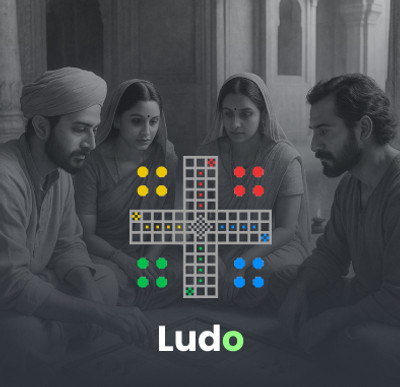
Originating from India (circa 6th century CE), Ludo evolved from the ancient game Pachisi, played by Indian royalty. The British adapted it into the modern version we know today in 1896, transforming a game of strategy and luck into a family-friendly classic that has spanned generations.

Born in India (circa 6th century CE) as Chaturanga, chess evolved through Persia (Shatranj) and spread to Europe in the Middle Ages, becoming the ultimate strategy game played by kings, scholars, and grandmasters for over a thousand years.
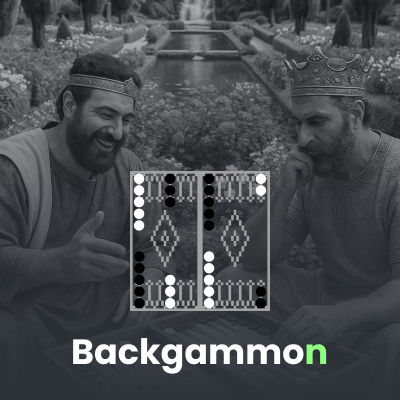
Born in Persia (circa 3000 BCE) as Nard, Backgammon is one of the oldest known board games, blending luck and strategy. It spread through the Middle East and Europe, becoming a timeless game of skill and fortune, played by kings, merchants, and noblemen for millennia.

Originating in Ancient Rome (circa 200 BCE), Nine Men’s Morris spread across Europe in the Middle Ages, becoming a strategic battlefield game etched into castle walls and played by knights and scholars as a test of tactical thinking.

Dating back to Ancient Egypt (circa 1300 BCE), Tic-Tac-Toe (XO) evolved through Roman times as a simple yet strategic game, becoming a globally recognized classic, loved for its quick play and universal appeal.

Popular in medieval Europe (14th to 17th centuries), Six Men's Morris was a strategic board game played in countries like France, Italy, and England, where players aimed to form mills with six pieces on a simplified board.

Originally inspired by the ancient Japanese game Hnefatafl, Othello was officially invented in Japan in 1971 by Goro Hasegawa, transforming into a globally recognized strategy game of flipping and domination, now played competitively worldwide.

Originating from the Bororo people of Brazil, Adugo is a hunt-and-chase game where a lone jaguar faces a group of dogs in a battle of strategy. Passed down through generations, this asymmetrical game of wits reflects the survival instincts of the Amazonian jungle.

Dating back to 10th-century Spain, Alquerque is the ancestor of modern checkers, played on a 5x5 board with pieces capturing by jumping. It spread through the Islamic world and medieval Europe, shaping strategy games for centuries.

Emerging in 19th-century Europe, Asalto is a siege-based strategy game where two officers defend a fortress against 24 attacking soldiers, reflecting military tactics and asymmetric gameplay popular in Victorian-era gaming salons.

Originating from Ghana, West Africa, Achi is a traditional three-in-a-row game played for centuries. With its simple yet strategic movement, it has been a staple of African village life, passed down through generations as a game of logic and planning.

Originating in Nepal over 1,000 years ago, Bagh Chal is a strategic battle between four tigers and twenty goats, where tigers hunt and goats trap, blending attack and defense in a classic mind game.

Originating from ancient Mesopotamia (around 3000 BCE) and later evolving in medieval France (12th century CE), Checkers is a timeless strategy game of diagonal movement and captures. Played by royalty and commoners alike, it has endured for millennia, adapting across cultures while maintaining its competitive essence.

Emerging from medieval Europe, Catch the Hare is an asymmetric strategy game where hounds strategically trap a lone hare. Rooted in hunting traditions, it was a game of patience and tactical planning, primarily played in noble and military circles.

Originating in West Africa (Gambia River Valley, exact date unknown), Choko is a traditional strategy game played by the Mandinka and Fula tribes. Its creator is lost to history, but it was primarily played by tribal warriors and community members as a test of tactical skill.

Originating in Scandinavia (circa 14th century CE), Fox and Geese is an asymmetric strategy game where a lone fox hunts geese. Played by European nobility and commoners alike, it was a popular medieval pastime inspired by real-life hunting tactics.

Originating in Korea (circa 19th century CE), Five-Field Kono is a strategic abstract game traditionally played by Korean scholars and noble families. It was a game of logical thinking and tactical movement passed down through generations.

Originating in West Africa (exact date unknown), Yoté is a fast-paced strategy game played by the Fulani and other West African tribes. It was a popular game among villagers and traders, emphasizing tactical movement and sudden captures.
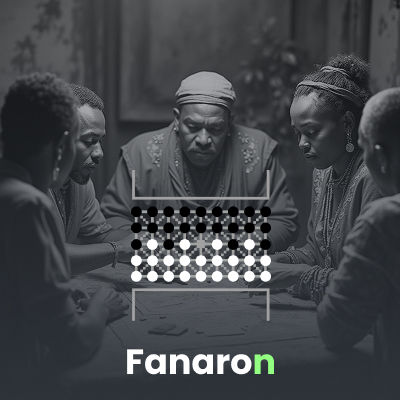
Originating in Madagascar (circa 1680 CE), Fanorona is a strategy game derived from Alquerque, played by Malagasy warriors and nobility. It was considered a game of tactical skill and military strategy, even influencing royal decisions.

Originating in West Africa (exact date unknown), Yoté is a fast-paced strategy game played by the Fulani and other West African tribes. It was a popular game among villagers and traders, emphasizing tactical movement and sudden captures.

Originating in Morocco (exact date unknown), Felli is a traditional two-player abstract strategy game related to Alquerque and draughts, featuring piece captures by leaping. Its creator is unknown, but it has been played by various social groups across Morocco.

Originating in Japan during the Edo period (mid-1700s), Gomoku, also known as "Five in a Row," The game spread to Europe in the 19th century.is a traditional abstract strategy game where two players alternately place black and white stones on a grid, aiming to be the first to align five stones horizontally, vertically, or diagonally.

Invented in the United States (circa 1960) by game designer Claude Soucie, Lines of Action is a two-player abstract strategy game where the objective is to connect all of one's pieces into a single group. It gained recognition after being featured in Sid Sackson's book A Gamut of Games in 1969.

Originating in Korea (at least 14th century CE), Pat Gonu is a traditional two-player abstract strategy game, part of the Gonu family of games. It has been played by various social groups across Korea.

Originating in New Zealand's North Island (pre-18th century), Mū Tōrere is a traditional Māori board game played by the Ngāti Porou tribe. It was a popular pastime among Māori communities, requiring strategic thinking and foresight.

Invented in the United States (1978) by Robert A. Kraus, Neutron is a two-player abstract strategy game first published in the July/August 1978 issue of Games & Puzzles magazine.

Originating in Ancient Rome (circa 1st century BCE), Ordo was a Roman strategy game played by soldiers and scholars, reflecting military formations and tactical thinking. Its exact creator is unknown, but it was a game of logic and positioning, enjoyed in Roman military camps and social gatherings.
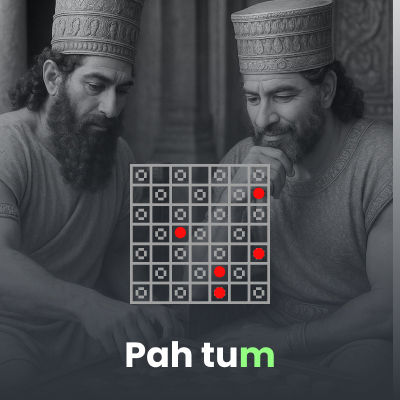
Originating in Mesopotamia and Assyria (circa 1800 BCE), Pah Tum is an ancient strategic board game played on a 7×7 grid. It was enjoyed by early urban civilizations along the Tigris River Valley, emphasizing the formation of continuous lines of playing pieces.

Originating in Ancient Mesopotamia (circa 3000 BCE) and evolving into its modern form in 12th-century France, Draughts is a strategic capture game played by nobility and commoners alike. Its roots trace back to Alquerque, later adapted to an 8×8 chessboard, becoming a widely recognized test of tactical skill.

Invented in the United States (1883 CE) by George Howard Monks, Halma is a strategic board game designed for two to four players, where the objective is to move all pieces to the opposite corner. Originally created as an alternative to Checkers, it became popular worldwide and later inspired the game Chinese Checkers.

Originating from the indigenous Maya civilization in Central America, Puluc is a traditional war strategy game played for centuries, symbolizing the capture and rescue of warriors. It was primarily played by the Maya people, using a track-based board and dice-like sticks to determine movement.
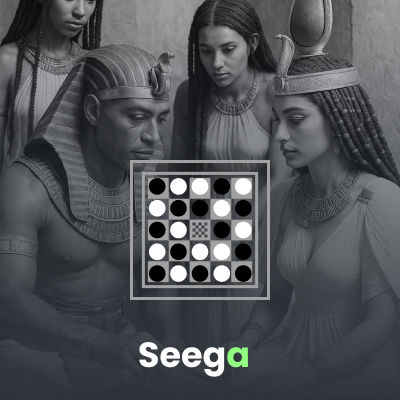
Originating in Egypt, Seega is an ancient two-player strategy game dating back to the 19th century, played on a 5x5 grid. Designed for tactical thinking and capturing opponent pieces, it was primarily enjoyed by Egyptian communities as a test of skill and foresight.

Originating in Scandinavia, Hnefatafl dates back to circa 400 CE and was played by Vikings as a strategy game of asymmetrical warfare. Popular across Northern Europe, it symbolized Viking battle tactics and leadership.

Originating in North Africa, Kharbaga is a traditional strategy game derived from Alquerque, played for centuries by Berber communities. Featuring tactical movement and capture mechanics, it remains a staple of Saharan nomadic culture, emphasizing foresight and strategy in gameplay.

Originating in Hawaii, Kōnane is an ancient strategy game played by Hawaiian chiefs and commoners before European contact. Resembling checkers but with unique jumping captures, it was used for both entertainment and strategic training, reflecting Polynesian tactical thinking and cultural heritage.

Picaria is a Native American strategy game originating from the Pueblo and Zuni tribes of the American Southwest. Played for centuries, this three-in-a-row game was enjoyed by both children and adults, serving as a tool for strategic thinking and cultural storytelling.

Madelinette is a traditional French strategy game, believed to have been played in medieval France. It was primarily enjoyed by noble families and scholars, serving as both entertainment and a way to develop strategic thinking.

Queah is a traditional strategy game from the Kru people of Liberia, West Africa, played for centuries as a test of tactical thinking. Often enjoyed by both children and adults, this two-player alignment game reflects the region's deep cultural appreciation for strategy and competition.

Originating in Indonesia (Java, circa 20th century CE), Surakarta is a unique strategy game known for its looping capture mechanic, played by Javanese communities. It remains a culturally significant game, blending traditional strategy with dynamic movement.
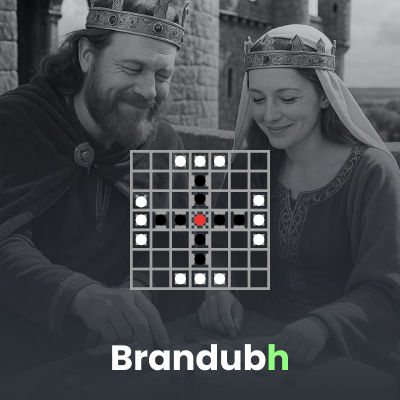
Originating in Ireland (circa 7th century CE), Brandubh is a Celtic variant of Hnefatafl, played by Irish nobility and warriors. Featuring a king’s escape objective, it symbolized Viking and Gaelic battle tactics, blending strategy with historical warfare themes.

Originating in China (circa 2000 BCE), Go is one of the world’s oldest strategy games, played by Chinese scholars, nobles, and military leaders. Designed to develop territorial control and tactical foresight, it later spread to Japan and Korea, becoming a pillar of intellectual competition.
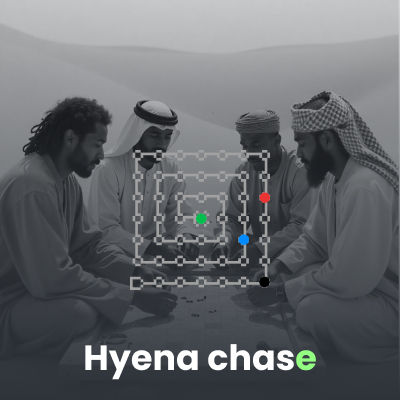
Originating in West Africa, Hyena Chase is a traditional board game played by various African tribes, symbolizing the struggle between survival and predation. Often enjoyed as a storytelling game, it teaches strategy, risk, and cooperation, reflecting the dynamics of village life and wildlife.

Originating among the Kiowa people of North America (exact date unknown), Zohn Ahl is a traditional game played primarily by Kiowa women and girls.It was a culturally significant pastime, passed down through generations as part of tribal traditions.

Originating in Mesoamerica (circa 200 BCE), Patolli was a gambling and racing game played by the Aztecs and Maya, often overseen by the god Macuilxochitl, the deity of games and luck. Enjoyed by both commoners and nobles, it was a game of strategy, chance, and ritual significance.

Originating in Ancient Greece (circa 7th century BCE), Pente Grammai was a strategic board game played by Greek philosophers, warriors, and citizens, emphasizing tactical movement across five lines.

Originating among the Zuni people of New Mexico (exact date unknown), Serpent, also known as Kolowis Awithlaknannai, is a traditional Native American strategy game symbolizing the battle between two warring serpents. Played for generations, it was used for entertainment, tactical thinking, and cultural storytelling.
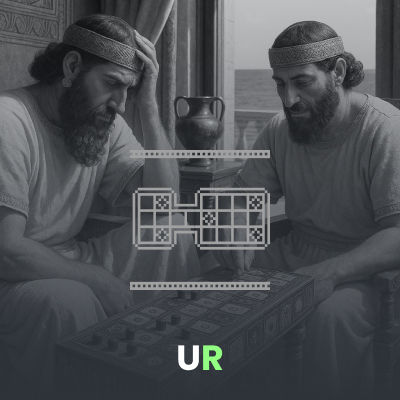
Dating back to Mesopotamia (circa 2600–2400 BCE), the Royal Game of Ur is one of the world's oldest known board games, played by Sumerian nobles and commoners alike. Discovered in the royal tombs of Ur, it was a game of strategy, luck, and ritual, reflecting the beliefs and daily life of ancient Mesopotamian society.

Originating in Ancient Rome (circa 1st century BCE), Latrunculi, or "The Game of Little Soldiers," was a strategic war game inspired by Greek military tactics. Played by Roman soldiers and aristocrats, it emphasized capturing and positioning, reflecting the tactical thinking of the Roman legions.

Originating in Ancient Rome (circa 1st century CE), Rota is a simple yet strategic three-in-a-row game played by Roman soldiers and commoners. Carved into stone surfaces across the empire, it was a popular pastime, reflecting the Roman love for tactical games.
Reviving 5,000 Years of Play
For thousands of years, games have connected people across cultures, empires, and generations. Pixply brings that legacy back to life, in one glowing, rollable board you can carry anywhere.
Join us in preserving timeless play and creating new memories.
Explore the games. Share the stories.